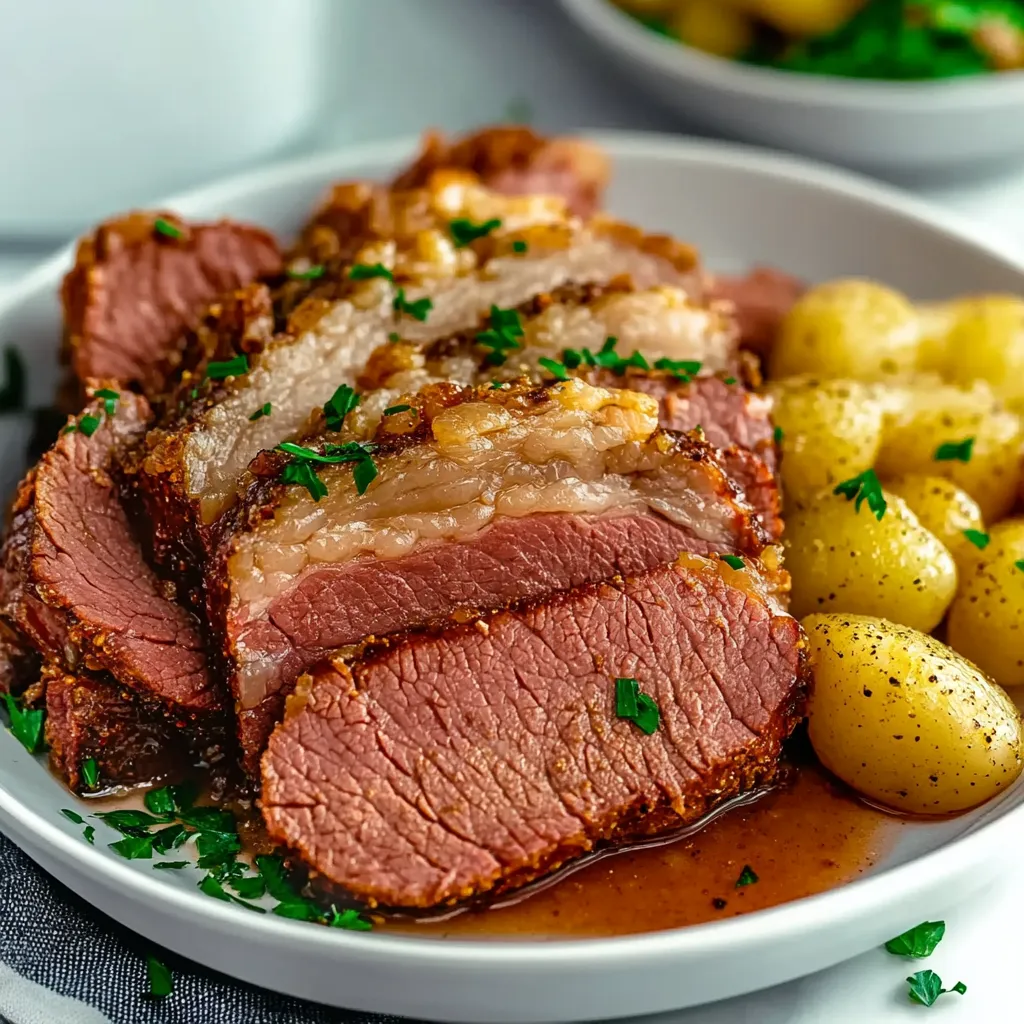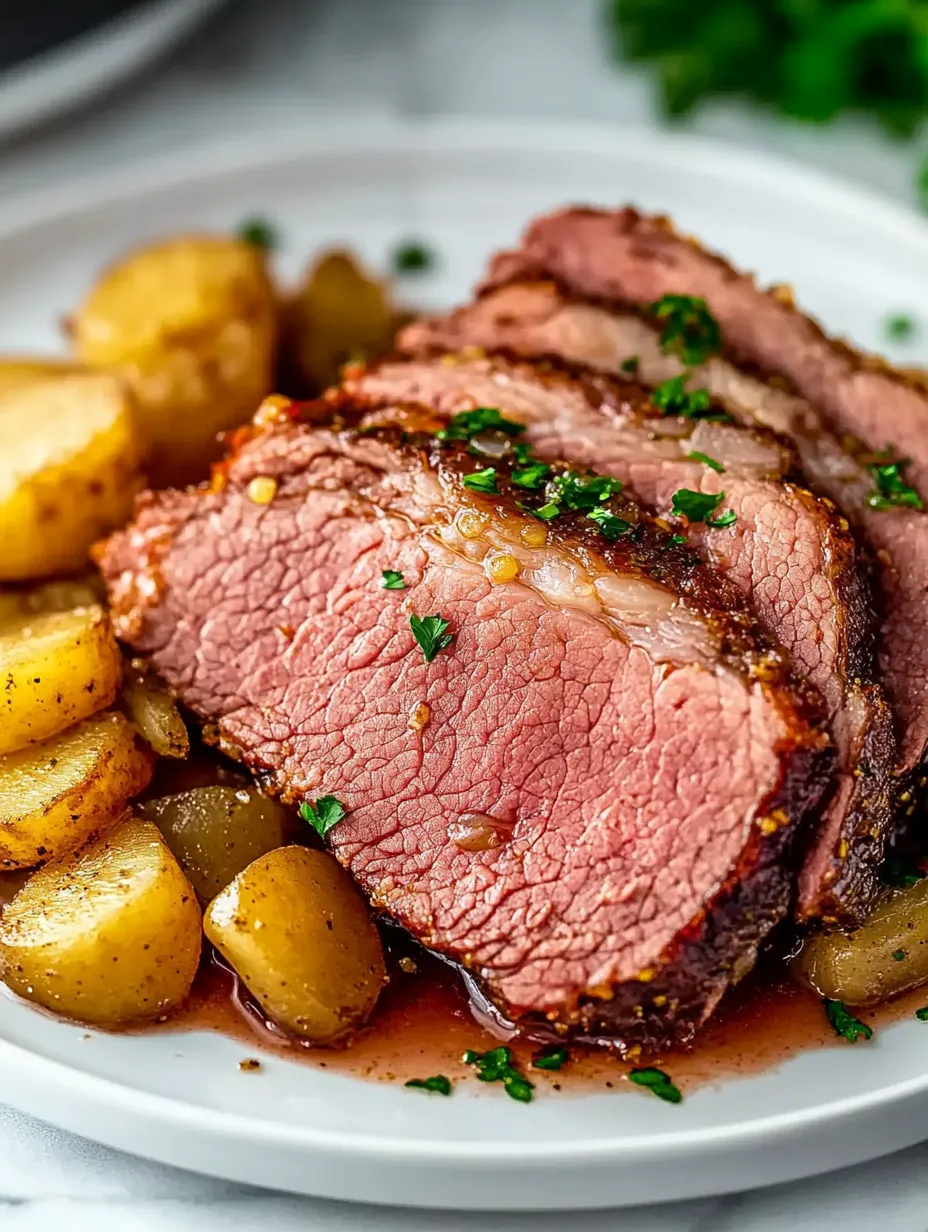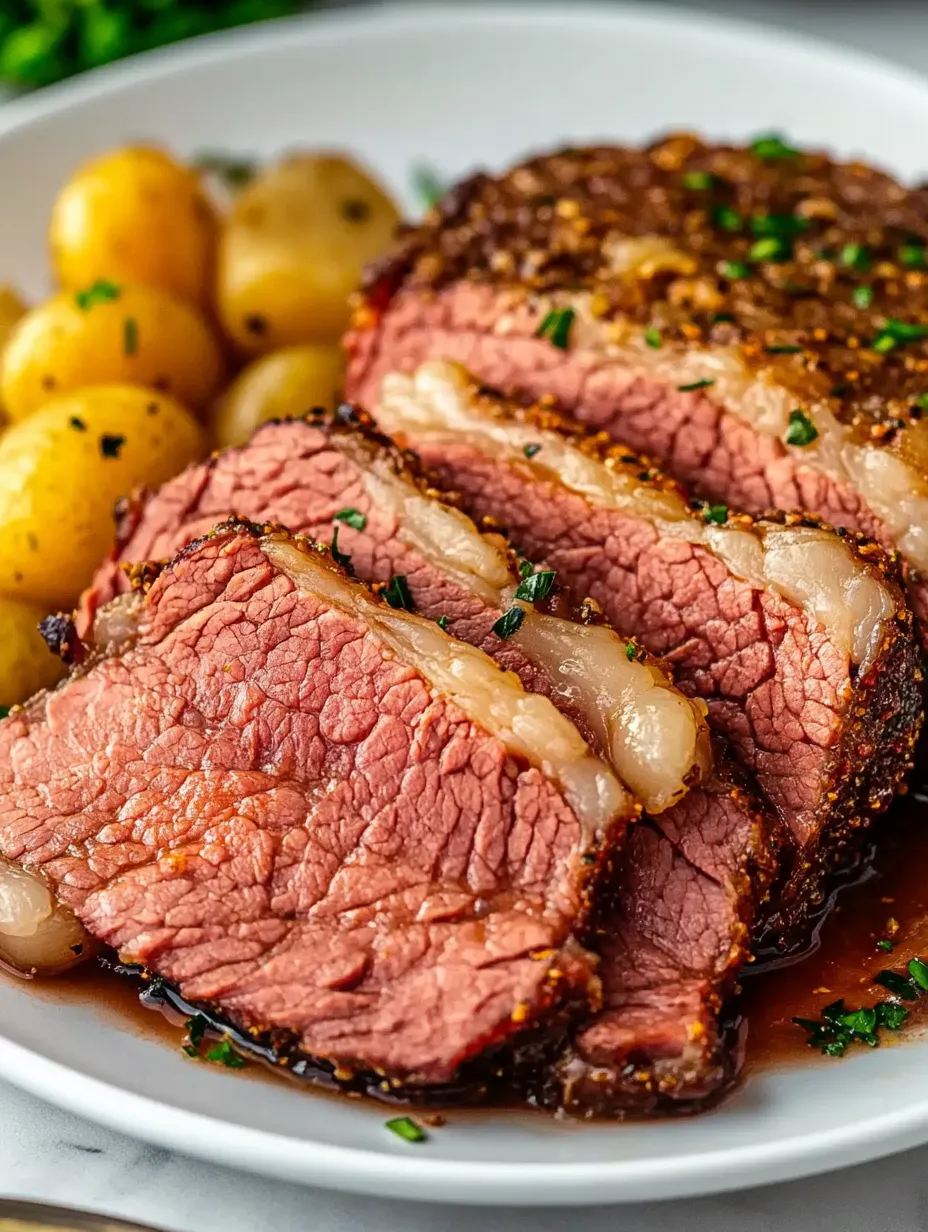 Save
Save
Corned beef brings back memories of Sunday dinners at my grandma's house - that rich aroma filling the kitchen, everyone hovering nearby waiting for the first bite. For years, I made it the way she taught me - simmering on the stove for what felt like forever. Then last St. Patrick's Day, running late as usual, I gambled on making it in my Instant Pot instead.
My first attempt was pure desperation. My brother and his family were visiting unexpectedly, and I had a corned beef brisket in the fridge I'd planned to cook that weekend. With only a couple hours before dinner, I figured the Instant Pot was worth a shot. When I sliced into that perfectly tender meat just 90 minutes later, I literally called my mom to brag. She's converted now too.
Flavor Foundation for Corned Beef
- Corned beef brisket: Get the flat cut if you want neat slices, point cut if you prefer it more marbled and juicy. Either way, don't trim that fat cap - it bastes the meat as it cooks.
- Cooking liquid: I use mostly beef broth with a splash of Guinness when I have it around. The beer adds something special that water just doesn't.
- Pickling spices: Those little spice packets that come with the brisket work fine, but sometimes I add extra bay leaves and juniper berries I keep in a jar just for this recipe.
- Aromatics: Chunky pieces of onion and whole garlic cloves infuse the broth without needing to be diced perfectly. Throw 'em in whole - they'll flavor everything nicely.
- Vegetables: You can't have corned beef without potatoes, carrots and cabbage cooked in all those lovely juices. Cut them bigger than you think - they cook fast.

My dad always said the secret to good corned beef was patience, which is why I resisted the pressure cooker method for so long. Turns out he was half right - it needs proper cooking, but the Instant Pot creates the same effect in less time. Last Christmas, I served this alongside my traditional oven-baked ham, and the corned beef disappeared first.
Cooking Walkthrough for Instant Pot Corned Beef
- Brisket prep:
- Rinse that meat! The package brine is way too salty if you skip this step. I give it a good 30-second rinse under cold water and pat it dry with paper towels. Did this make a difference? Absolutely - the first time I skipped rinsing, my husband couldn't finish his portion because of the salt.
- Pot setup:
- Fat side faces UP in the pot. This isn't negotiable. As that fat renders, it self-bastes the meat, making everything juicier. I learned this the hard way when I put it upside down once and ended with meat that was good but noticeably drier on top.
- Liquid levels:
- Don't completely submerge the meat - about 4 cups of liquid for a 3-pound brisket gets you where you need to be. You want the flavor concentrated, not swimming in too much liquid. My first attempt, I filled it too high and the flavor wasn't as intense as I wanted.
- Pressure timing:
- 90 minutes on high pressure hits the sweet spot. I've tried 75 minutes (still a bit tough) and 2 hours (starts falling apart too much for nice slices). With 90 minutes, you get meat that slices beautifully but still flakes with a fork.
- The waiting game:
- Let the pressure naturally release for 15 minutes before you touch that valve. This isn't just a safety thing - it's when the meat fibers relax and reabsorb juices. Rush this step and you'll literally watch juices run out onto your cutting board instead of staying in the meat where they belong.
- Vegetable strategy:
- Cook the vegetables separately after the meat's done and resting. Just 5 minutes on high pressure while your brisket is resting will cook them perfectly. Mix in too early and you'll have cabbage mush and potato soup instead of nice, distinct vegetables.
My neighbor Tom, who claims Irish heritage and takes his corned beef very seriously, was skeptical when I told him about the Instant Pot method. He's been making his great-grandmother's recipe for 40 years. Last March, his stove died the day before his annual St. Patrick's Day party. He borrowed my Instant Pot, used this recipe, and now refuses to give the pot back. I had to buy another one.
Serving Style for Corned Beef
I like to arrange everything on my biggest platter - the meat sliced in the center with the colorful vegetables around the edges. Whole grain mustard and horseradish cream in little bowls on the side let people customize. For big gatherings, I sometimes add a loaf of Irish soda bread and butter on the side. The whole presentation looks impressive despite being so simple.
Leftovers Plan for Corned Beef
The real magic happens the next day. Chop up leftover meat and potatoes, fry them in a cast iron skillet until crispy on the bottom, and top with eggs for the best corned beef hash you've ever had. Or pile thin slices on rye bread with Swiss cheese, sauerkraut and Russian dressing for Reubens that put delis to shame. My husband actually gets excited when dinner's over because he knows what breakfast will be.
Storage Know-How for Corned Beef
Keep that meat submerged in the cooking liquid when you store it. This makes ALL the difference between dry, sad leftovers and meat that tastes as good on day three as it did on day one. I use a shallow container that lets the meat lay flat, covered in that flavorful broth. It'll keep well for 4-5 days in the fridge, though it never lasts that long at my house.

I've probably made this recipe twenty times in the past couple years, and it's become one of those dishes people request when they visit. My mother-in-law, who rarely compliments anything I cook, asked for the recipe last Easter. If that's not kitchen success, I don't know what is. There's something deeply satisfying about making a traditional dish that brings comfort and connection, especially when you find a way to make it work for modern life without losing what makes it special.
Common Recipe Questions
- → Can I use a larger or smaller corned beef brisket?
- Yes, but you'll need to adjust the cooking time. A good rule of thumb is 25-30 minutes per pound on high pressure. Make sure your Instant Pot is large enough to accommodate a bigger cut without exceeding the max fill line.
- → Why rinse the corned beef before cooking?
- Rinsing removes excess salt from the brine solution. Corned beef is cured in a salt solution, and rinsing helps prevent the final dish from being too salty while still retaining the flavor from the curing process.
- → What's the difference between flat cut and point cut corned beef?
- Flat cut is leaner, more uniform in shape, and slices neatly. Point cut has more marbling (fat) which makes it more flavorful but slightly less uniform for slicing. Both work well in this recipe, with point cut being slightly more tender.
- → Can I add beer to this recipe?
- Absolutely! Replace part or all of the beef broth with your favorite beer (especially a dark beer like Guinness) for an extra depth of flavor that complements the corned beef perfectly.
- → What can I do with leftover corned beef?
- Leftover corned beef makes excellent Reuben sandwiches, corned beef hash for breakfast, or can be diced and added to soups or salads. It will keep refrigerated for 3-4 days or can be frozen for up to 2 months.
